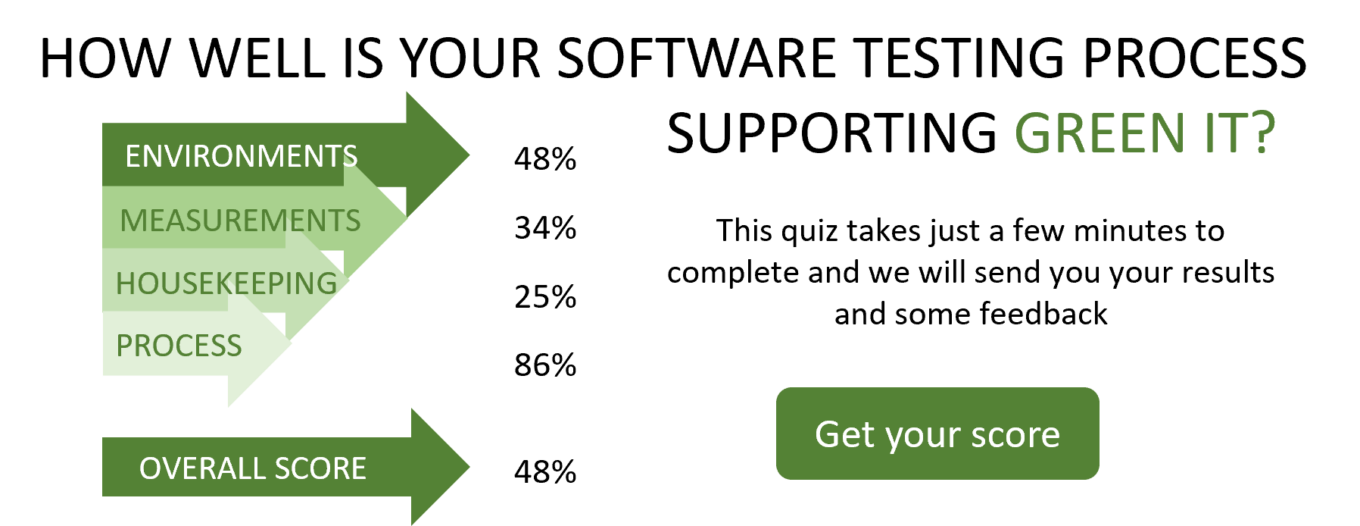Software testing can support sustainable IT in several ways. Below we have outlined some ideas and if you are interested to see how your team are doing then please use our Sustainable Software Testing survey to see how you score and how your efforts contribute to sustainable IT practices:
- Optimising Resource Utilisation: Software testing can help identify and optimise resource-intensive test cases, reducing the overall resource requirements for testing. By focusing on essential tests and eliminating redundant or unnecessary test cases, organisations can minimise resource consumption and energy usage.
- Test Automation: Automated testing techniques can significantly improve resource efficiency and reduce energy consumption. By automating repetitive test activities, organisations can reduce the time and resources required for testing, leading to energy savings and increased productivity.
- Performance Testing and Optimisation: Performance testing helps identify bottlenecks and performance issues in software systems. By conducting thorough performance testing, organisations can optimise resource utilisation, reduce system load, and improve energy efficiency. This ensures that software systems consume resources optimally, resulting in energy savings during production usage.

- Defect Prevention and Early Detection: Effective software testing practices focus on detecting and fixing defects early in the development process. By identifying and addressing issues at an early stage, organisations can avoid costly rework, reduce energy consumption associated with debugging and fixing defects, and minimise waste in terms of resources and time.
- Test Environment Efficiency: Efficient management of test environments is crucial for sustainable IT. Software testing can help optimise test environments by automating the provisioning and deprovisioning of resources. This ensures that resources are allocated and released in a timely manner, reducing resource waste and energy consumption.
- Green Testing Techniques: Adopting green testing techniques focuses on minimising the environmental impact of testing activities. This includes practices such as reducing test case redundancy, optimising test execution sequences, and prioritising energy-efficient testing approaches. By implementing these techniques, organisations can improve testing efficiency while minimising energy consumption.
- Collaboration and Knowledge Sharing: Encouraging collaboration and knowledge sharing among testers can help optimise testing efforts and avoid duplicating resources. By sharing test environments, tools, and best practices, organisations can streamline testing processes, reduce resource waste, and enhance overall sustainability.
By incorporating these sustainable practices into software testing, organisations can not only maintain the quality and reliability of their software systems but also contribute to a more sustainable IT environment. Sustainable software testing helps minimise resource consumption, reduce energy usage, and mitigate the environmental impact of IT operations, aligning with broader sustainability goals.
Simon Frankish recently presented “Sustainable Software Testing needn’t be Rocket Science” at the QA&TEST Embedded Conference in Bilbao, Spain. This event had a dedicated sustainability track so it was great to see other people talk about this vital topic.
You can take a look at that presentation here.


